Related Research Articles
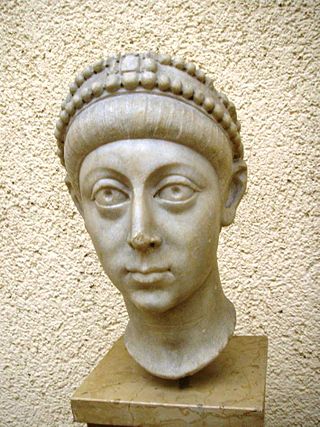
Arcadius was Roman emperor from 383 to his death in 408. He was the eldest son of the Augustus Theodosius I and his first wife Aelia Flaccilla, and the brother of Honorius. Arcadius ruled the eastern half of the empire from 395, when their father died, while Honorius ruled the west. A weak ruler, his reign was dominated by a series of powerful ministers and by his wife, Aelia Eudoxia.
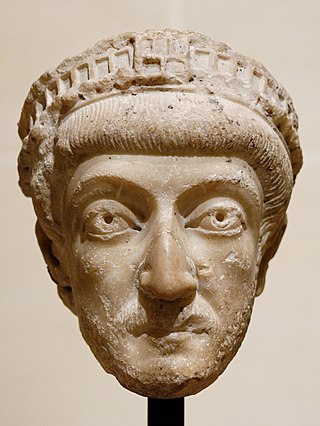
Theodosius II was Roman emperor from 408 to 450. He was proclaimed Augustus as an infant and ruled as the Eastern Empire's sole emperor after the death of his father, Arcadius, in 408. His reign was marked by the promulgation of the Theodosian law code and the construction of the Theodosian Walls of Constantinople. He also presided over the outbreak of two great Christological controversies, Nestorianism and Eutychianism.

Aelia Pulcheria was an Eastern Roman empress who advised her brother, the emperor Theodosius II, during his minority and then became wife to emperor Marcian from November 450 to her death in 453.

A hammam, also often inaccurately called a Turkish bath by Westerners, is a type of steam bath or a place of public bathing associated with the Islamic world. It is a prominent feature in the culture of the Muslim world and was inherited from the model of the Roman thermae. Muslim bathhouses or hammams were historically found across the Middle East, North Africa, al-Andalus, Central Asia, the Indian subcontinent, and in Southeastern Europe under Ottoman rule.

In ancient Rome, thermae and balneae were facilities for bathing. Thermae usually refers to the large imperial bath complexes, while balneae were smaller-scale facilities, public or private, that existed in great numbers throughout Rome.
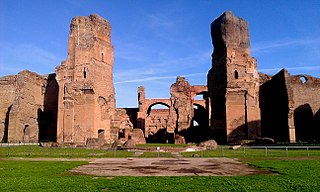
The Baths of Caracalla in Rome, Italy, were the city's second largest Roman public baths, or thermae, after the Baths of Diocletian. The baths were likely built between AD 212 and 216/217, during the reigns of emperors Septimius Severus and Caracalla. They were in operation until the 530s and then fell into disuse and ruin.

Aelia Eudoxia was a Roman empress consort by marriage to the Roman emperor Arcadius. The marriage was the source of some controversy, as it was arranged by Eutropius, one of the eunuch court officials, who was attempting to expand his influence. As Empress, she came into conflict with John Chrysostom, the Patriarch of Constantinople, who was popular among the common folk for his denunciations of imperial and clerical excess. She had five children, four of whom survived to adulthood, including her only son and future emperor Theodosius II, but she had two additional pregnancies that ended in either miscarriages or stillbirths and she died as a result of the latter one.

The Baths of Diocletian were public baths in ancient Rome. Named after emperor Diocletian and built from AD 298 to 306, they were the largest of the imperial baths. The project was originally commissioned by Maximian upon his return to Rome in the autumn of 298 and was continued after his and Diocletian's abdication under Constantius, father of Constantine.

The Theodosian dynasty was a Roman imperial family that produced five Roman emperors during Late Antiquity, reigning over the Roman Empire from 379 to 457. The dynasty's patriarch was Theodosius the Elder, whose son Theodosius the Great was made Roman emperor in 379. Theodosius's two sons both became emperors, while his daughter married Constantius III, producing a daughter that became an empress and a son also became emperor. The dynasty of Theodosius married into, and reigned concurrently with, the ruling Valentinianic dynasty, and was succeeded by the Leonid dynasty with the accession of Leo the Great.

Greece in the Roman era describes the Roman conquest of ancient Greece as well as that of the Greek people and the areas they inhabited and ruled historically. It covers the periods when Greece was dominated first by the Roman Republic and then by the Roman Empire.
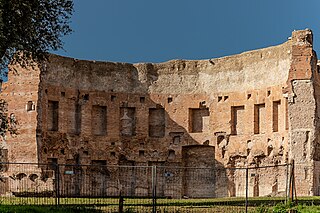
The Baths of Trajan were a massive thermae, a bathing and leisure complex, built in ancient Rome and dedicated under Trajan during the kalendae of July 109, shortly after the Aqua Traiana was dedicated.
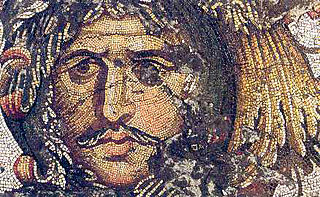
The Great Palace of Constantinople, also known as the Sacred Palace, was the large imperial Byzantine palace complex located in the south-eastern end of the peninsula today making up the Fatih district of Istanbul, in modern Turkey. It served as the main imperial residence of the Eastern Roman emperors until 1081 and was the centre of imperial administration for over 690 years. Only a few remnants and fragments of its foundations have survived into the present day.

The Suburban Baths are a building in Pompeii, Italy, a town in the Italian region of Campania that was buried by the eruption of Mount Vesuvius in 79 AD, which consequently preserved it.
The Baths of Zeuxippus were popular public baths in the city of Constantinople. The origin of their name was disputed already in antiquity and could go back either to the god Zeus or to the artist Zeuxis. Constructed between 100 and 200, the Baths of Zeuxippus were destroyed during the Nika revolt of 532 and then rebuilt several years later. They were famed primarily for the many statues inside them, representing prominent individuals from history and mythology.
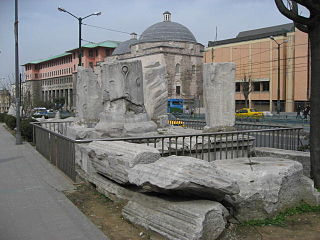
The Forum of Theodosius was probably the largest square in Constantinople and stood on the Mese, the major road that ran west from Hagia Sophia. It was originally built by Constantine I and named the Forum Tauri. In 393, however, it was renamed after Emperor Theodosius I, who rebuilt it after the model of Trajan's Forum in Rome, surrounded by civic buildings such as churches and baths and decorated with a triumphal column at its centre. This forum should not be confused with the Strategion, a probably Hellenistic agora renewed by Theodosius I, lying near today's Sirkeci and also named after him Forum Theodosii.
The Column of Arcadius was a Roman triumphal column in the forum of Arcadius in Constantinople built in the early 5th century AD. The marble column was historiated with a spiralling frieze of reliefs on its shaft and supported a colossal statue of the emperor, probably made of bronze, which fell down in 740. Its summit was accessible by an internal spiral staircase. Only its massive masonry base survives.
Arcadia was the third daughter of the Roman emperor Arcadius and Aelia Eudoxia and a member of the Theodosian dynasty.

The preservation and extensive excavations at Ostia Antica have brought to light 26 different bath complexes in the town. These range from large public baths, such as the Forum Baths, to smaller most likely private ones such as the small baths. It is unclear from the evidence if there was a fee charged or if they were free. Baths in Ostia would have served both a hygienic and a social function like in many other parts of the Roman world. Bath construction increased after an aqueduct was built for Ostia in the early Julio-Claudian Period. Many of the baths follow simple row arrangements, with one room following the next, due to the density of buildings in Ostia. Only a few, like the Forum Baths or the Baths of the Swimmers, had the space to include palestra. Archaeologist name the bathhouses from features preserved for example the inscription of Buticoso in building I, XIV, 8 lead to the name Bath of Buticosus or the mosaic of Neptune in building II, IV, 2 lead to the Baths of Neptune. The baths in Ostia follow the standard numbering convention by archaeologists, who divided the town into five regions, numbered I to V, and then identified the individual blocks and buildings as follows: (region) I, (block) I, (building) 1.
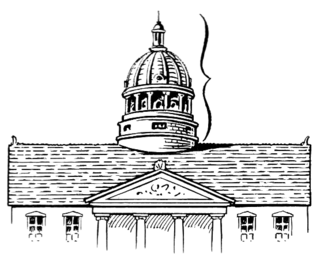
Domes were a characteristic element of the architecture of Ancient Rome and of its medieval continuation, the Byzantine Empire. They had widespread influence on contemporary and later styles, from Russian and Ottoman architecture to the Italian Renaissance and modern revivals. The domes were customarily hemispherical, although octagonal and segmented shapes are also known, and they developed in form, use, and structure over the centuries. Early examples rested directly on the rotunda walls of round rooms and featured a central oculus for ventilation and light. Pendentives became common in the Byzantine period, provided support for domes over square spaces.

The ancient city of Constantinople was divided into 14 administrative regions. The system of fourteen regiones was modelled on the fourteen regiones of Rome, a system introduced by the first Roman emperor Augustus in the 1st century AD.
References
- ↑ Angelova, Diliana (2015). Sacred Founders: Women, Men, and Gods in the Discourse of Imperial Founding, Rome Through Early Byzantium. California: University of California Press. p. 155. ISBN 978-052-028-401-2.
- ↑ Standish, Frank (1838). The Shores of the Mediterranean: Volume 2. R. Lumley. p. 166.
Before taking Constantinople, the Baths of Arcadius occupied the site of the seraglio.
- ↑ Bassett, Sarah (2013). "Constantinople, history and monuments". The Encyclopedia of Ancient History. Blackwell Publishing Ltd. pp. 1–7. doi:10.1002/9781444338386.wbeah14075. ISBN 9781444338386.
He upgraded the water supply with the addition of a series of new cisterns in the center and oversaw the construction of a new harbor and renovation of the Baths of Arcadius.